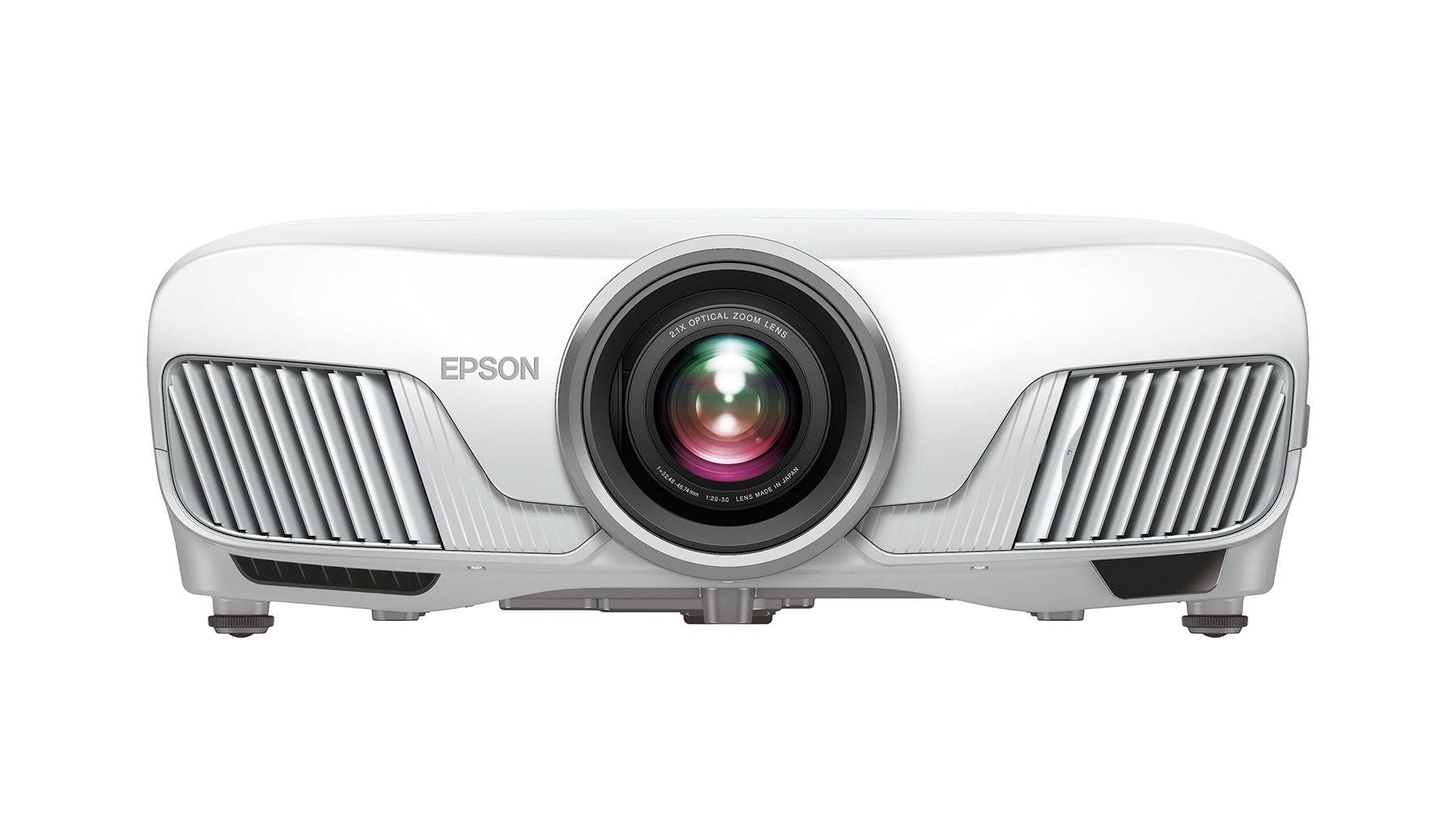TechRadar Verdict
It may not be native 4K, but with images this clean, contrast-y and colorful it’s hard to argue with this massive projectors cinematic prowess.
Pros
- +
Affordable price
- +
4K detail and color
- +
Versatile lens-shift
- +
Seven-year lamp life
- +
Very quiet
Cons
- -
Not 'true' 4K
- -
No wireless control
- -
No HLG HDR playback
- -
Massive size
Why you can trust TechRadar
Let's clear something up: Despite the 4010 (as it's known in the U.S.) and EH-TW7400 (for the rest of the world) being in Epson's PRO-UHD line-up, it's not actually a native 4K projector.
That may a bit disappointing if you're looking to upgrade from a full HD projector, but the only brands currently selling projectors with native 4K pixel counts for regular-ish folk are Sony and JVC. That means you'll largely be comparing faux-4K projectors like the Epson 4010 to the likes of the BenQ HT2550 or TK800, and Optoma UHD60.
What makes them all faux-4K? Basically it comes down to a pixel-shifting technique that splits 4K images into two before alternately projecting them side-by-side to create the '4K enhancement' look despite the projector having only a Full HD chipset.
It's a workaround to using a full 4K panel, for sure, but it can look exquisite when done properly. And luckily, that's more-or-less what Epson has achieved on the 4010/EH-TW7400.
Now selling for $1,799.99 (£1,799.99), this very large projector is based around Epson's own 3LCD engine and it deals in 4K, HDR 10, 3D, it has an electronic lens, an auto-focus system, and it can reach 2,400 lumens brightness.
But is faux-4K just as good as the real thing?
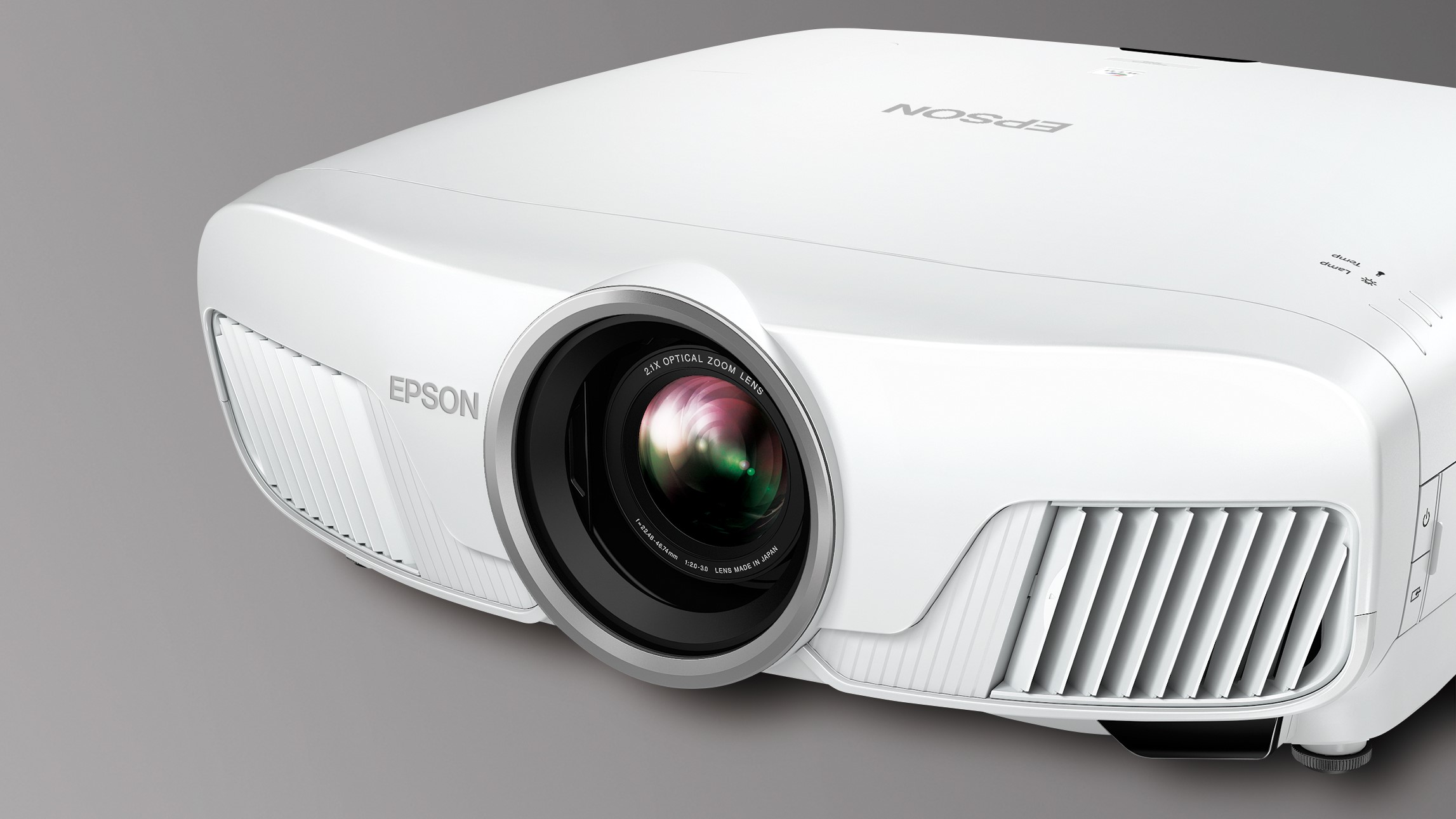
Design
The 4010/EH-TW7400 is massive and designed to stay put... just not on a flimsy table. We're talking a ceiling mount, or at least a big, heavy AV rack.
Available in black or white, it measures 520x450x193 mm and weighs 11.2kg - it's one of the larger projectors in its class and looks like something out of an actual movie theater.
The curved, rounded chassis lends a softer look for what could easily be an austere-looking machine, such is its size. However, the real design win is the sliding door lens cap, which auto-unfurls in two parts when the projector is activated, and vice versa when it's switched off.
Without Alexa or Google voice control offered by the likes of Optoma, it's left to a remote control to tweak the 4010/EH-TW7400. However, as well as being pleasingly large yet light, the buttons are logical and well laid out, as well as nicely backlit in orange upon any button press. However, you do need to press a specific button on the remote to wake the backlight, which slightly defeats the purpose.
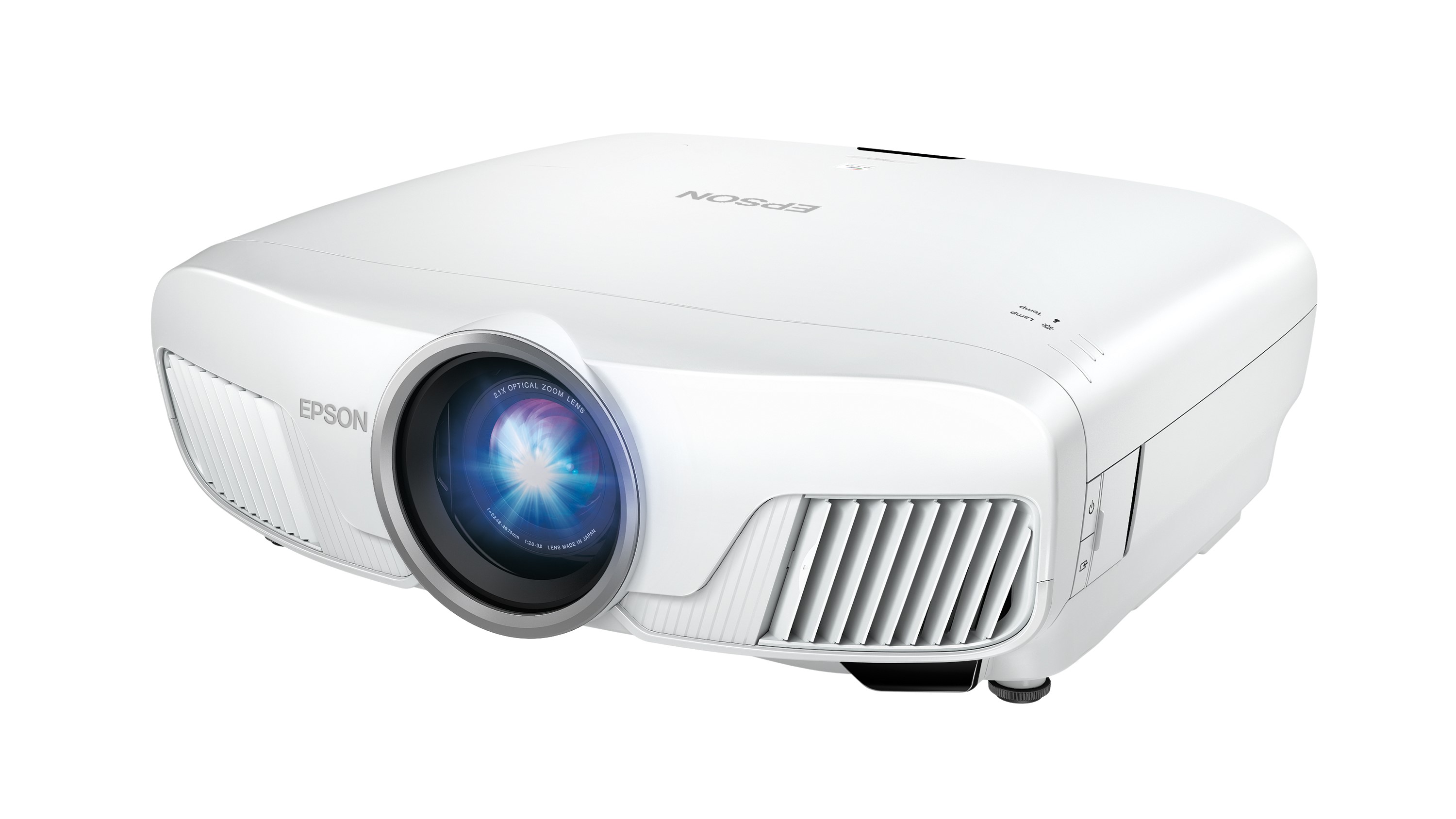
Setup
The 4010/EH-TW7400 proved a cinch to set-up with an 80-inch projector screen. Its 2.1x optical zoom and throw ratio of 1.35-2.84:1 will be overkill for most rooms going for something less than its maximum 300-inch image, but what we really liked was the powered focus. When used together with the powered the vertical (96%) and horizontal (47%) lens shift, it means you can sit down while you set-up, and do everything on the remote. Who said remote controls were dead?
Ins and outs are found within a deep canyon on the back, and include two HDMI inputs (though only one of them is HDCP 2.2 compliant for 4K support), a VGA in for hooking-up a PC, an RS-232C for merging it with a home entertainment control system (such as AMX, Crestron or Control4), and a USB 2.0 if you fancy adding an (optional) WiFi dongle. There's also a wired Ethernet LAN slot.
Once you've done the basics, there are some picture enhancements to pick through or ignore, as you see fit.
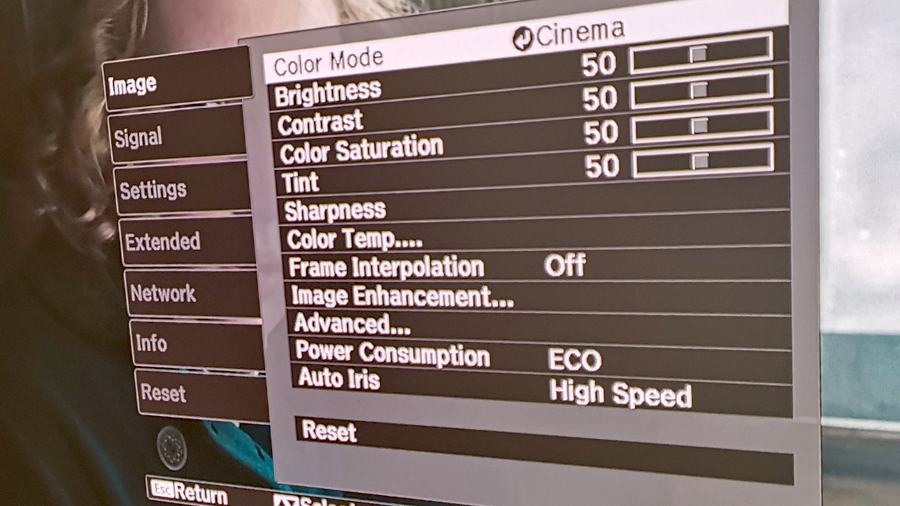
Performance
Though it is hardly the kind of hub page found on most smart TVs, this projector is unusual in that its user interface has a dedicated homepage. However, instead of being with stuffed with apps, it merely provides panels for quickly choosing between sources and color modes.
The latter is a straight fight between Dynamic, Bright Cinema, Natural, Cinema and Digital Cinema, the first two of which do pretty well out of the box in daylight. A quick blast of daytime TV revealed plenty of bright contrast-y color, with the Bright Cinema mode excelling in ambient light.
The 4010/EH-TW7400 has a frame interpolation mode, which inserts frames to make motion sequences and camera pans look smoother. Nice idea, but the drawback is that the more frames are inserted the smoother the action gets, but the more you'll see some fizzing, flashing and snapping around moving objects.
It's presented here in three flavors – Low, Normal or High – and predictably it's the middle one that offers a good balance (the Low version isn't worth bothering with, and the High setting is almost unwatchable). Sadly, it doesn’t appear to work with live 4K TV broadcasts, which is a shame considering is sports-centric purpose.
With the lights dimmed, it's the Cinema and Digital Cinema modes that get the most out of the 4010/EH-TW7400's native 200,000:1 contrast ratio.
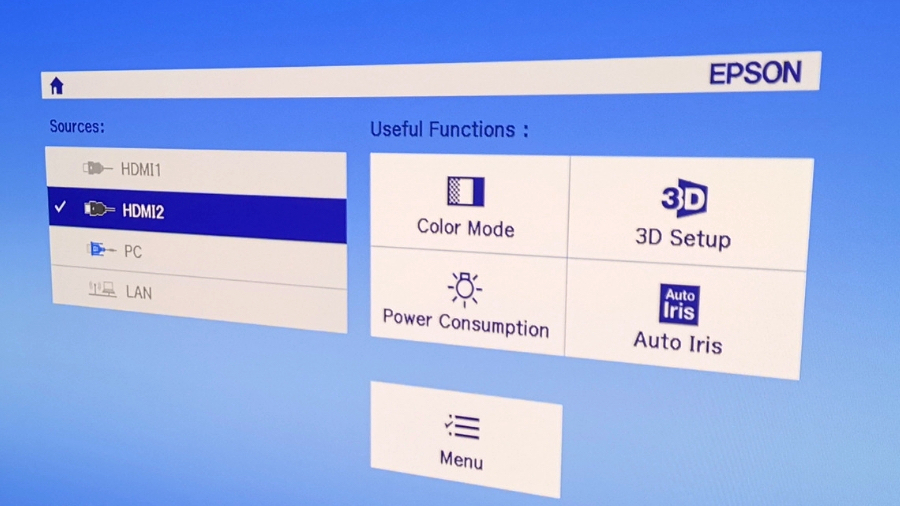
So how does it do with 4K sources? With its '4K enhancement' toolbox on its second most powerful setting, Solo: A Star Wars Story is draped in detail. As Han and Chewbacca fight on top of the coaxium-carrying train, there's plenty of detail in the peaks of Vandor, while in the lair of Dryden Vos, there are lots of vivid colors on show in the room, and plenty of convincing blacks and shadow detail.
Detail is high despite the 4010/EH-TW7400 not being a native 4K projector, something that's more obvious if you take a step-down the video food chain and play a standards Blu-ray disc. Though WWII miniseries The Pacific is highly watchable, its Full HD images have a little less pizazz, with colors slightly muted and more uniform, and close-ups lacking the biting detail of 4K mode.
The 4010/EH-TW7400 is also able to deal with 3D Blu-ray discs, if anyone still plays them, though there are no 3D active shutter glasses in the box.
Though rated at 31 dB and as low as 20 dB in eco mode, during our tests the 4010/EH-TW7400 clocked-in at 44 dB in high brightness mode, and 44 dB in eco. However, to our ears, the 4010/EH-TW7400 was whisper-quiet in anything other than the high-power modes.
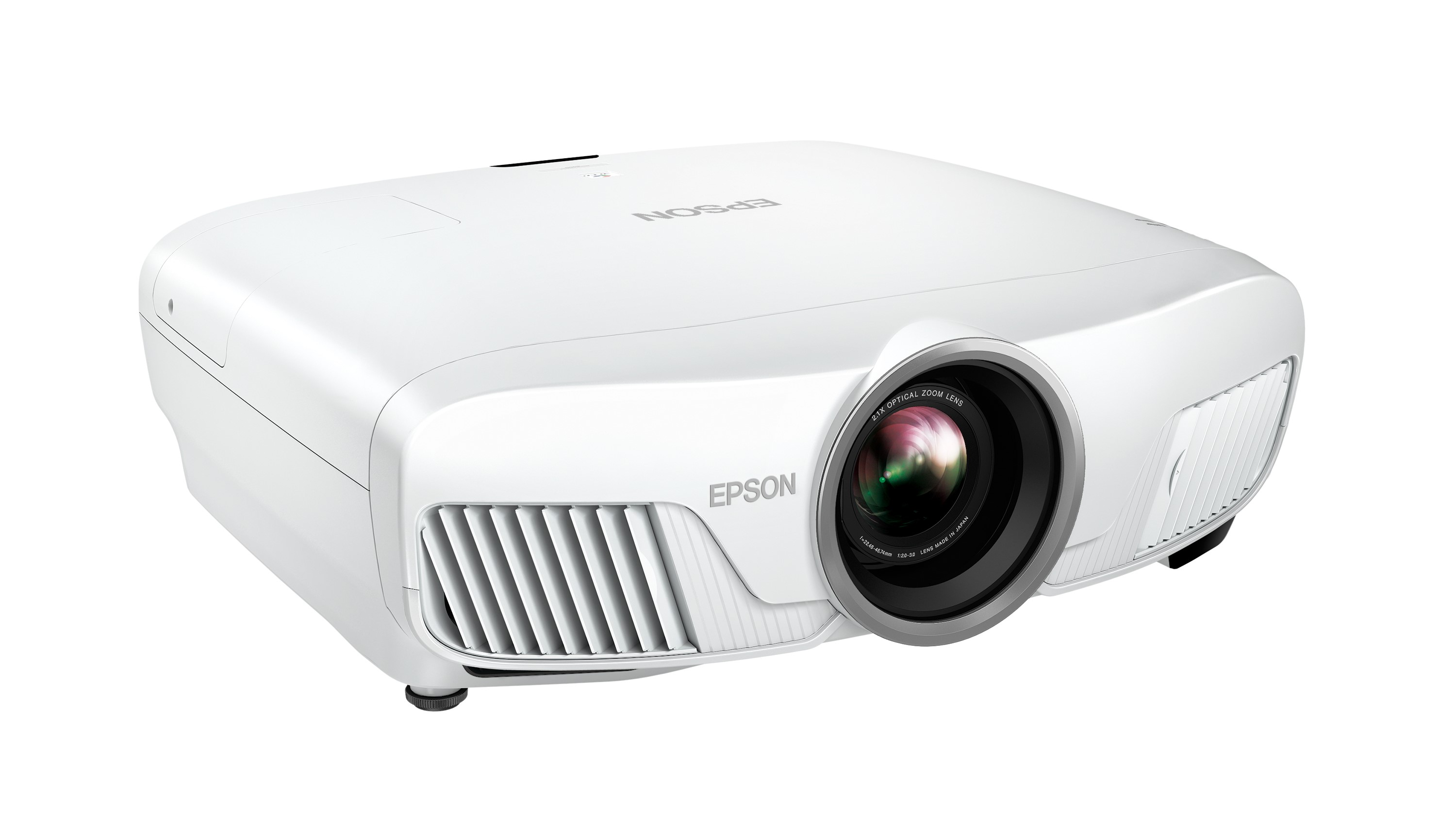
Final verdict
Are projectors the future, or the past? Some manufacturers are adding features like voice control, built-in speakers and streaming apps, clearly hoping that one day soon the projector can be a do-it-all hub to command the smart home.
Epson clearly doesn't give a jot about any of that, and has instead produced a highly focused attempt at a home cinema projector that's adept only at creating clear, contrasty and colossal 4K Ultra HD images.
It's not the greatest feature-set around – even Epson offers models with more bells and whistles (notably its step-up EH-TW9400, which adds Hybrid Log Gamma, 4K/60p HDR at 18Gbps, and Epson's 4K WiHD wireless transmitter), nor is as ultra-detailed as native 4K projectors – but the massive 4010/EH-TW7400's combination of must-have features and uncompromisingly cinematic images is impossible to argue with.
- Want to keep looking? Check out our round-up of the best projectors
Jamie is a freelance tech, travel and space journalist based in the UK. He’s been writing regularly for Techradar since it was launched in 2008 and also writes regularly for Forbes, The Telegraph, the South China Morning Post, Sky & Telescope and the Sky At Night magazine as well as other Future titles T3, Digital Camera World, All About Space and Space.com. He also edits two of his own websites, TravGear.com and WhenIsTheNextEclipse.com that reflect his obsession with travel gear and solar eclipse travel. He is the author of A Stargazing Program For Beginners (Springer, 2015),
